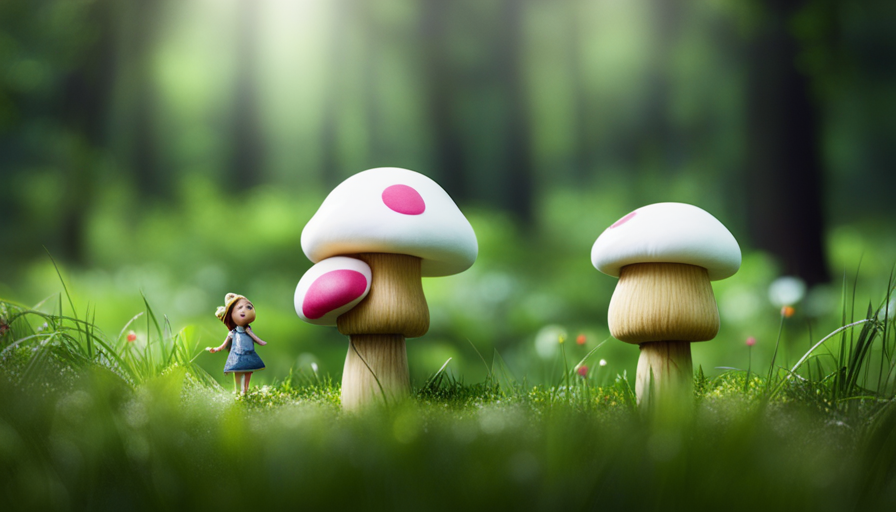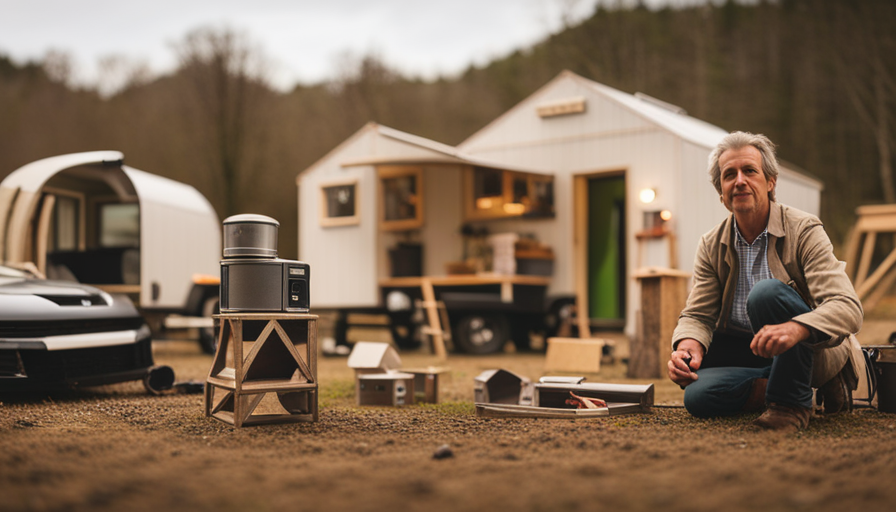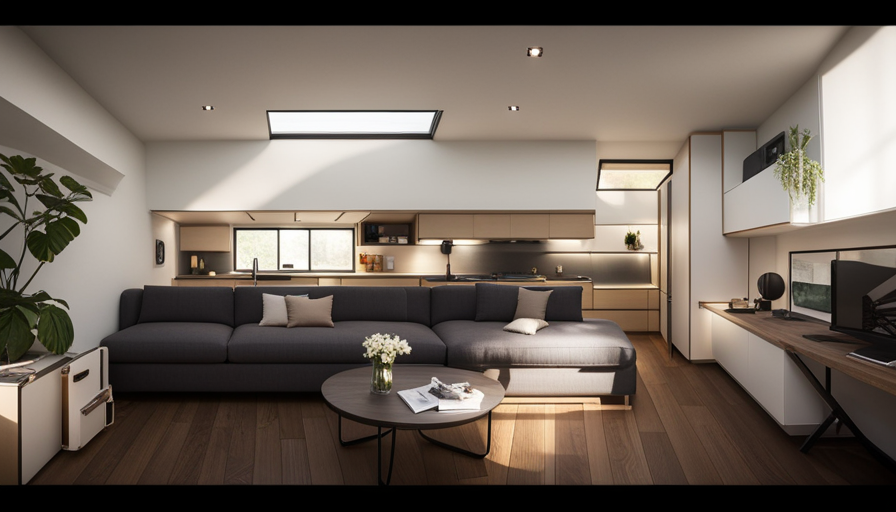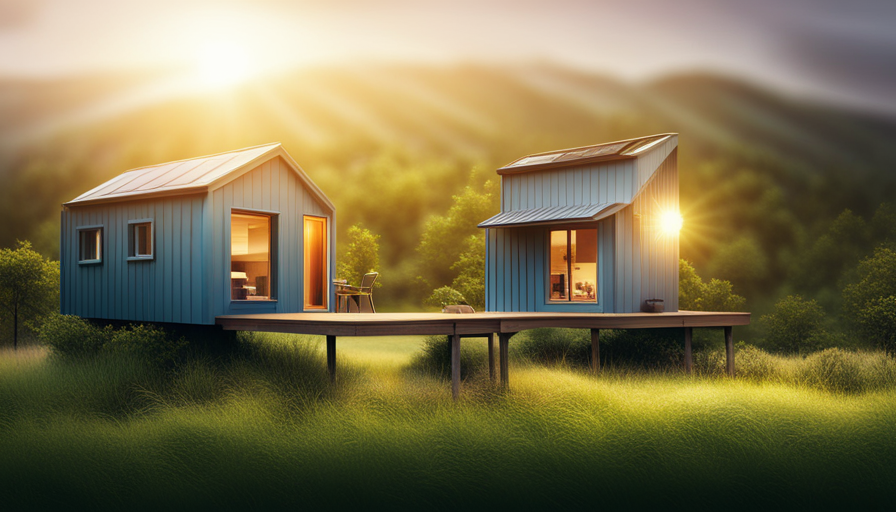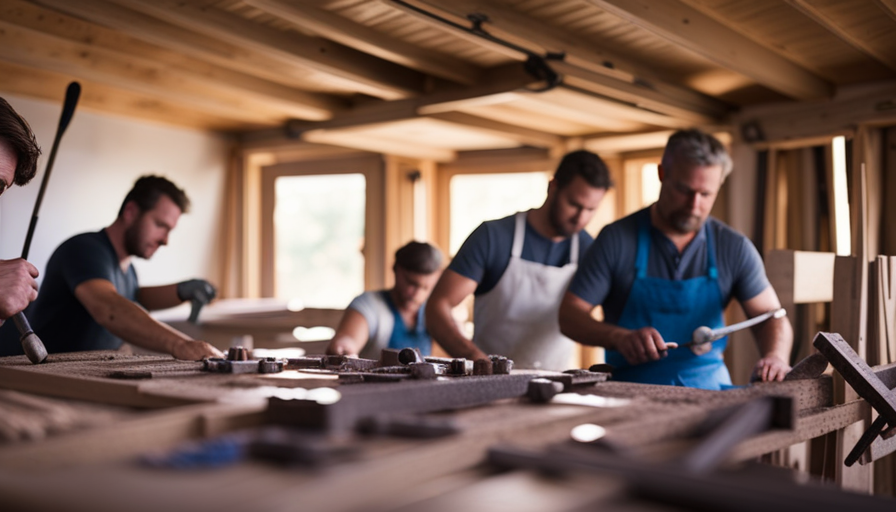In a time where bigger and more grand accomplishments reign supreme, a new story emerges that gently encourages us to appreciate the beauty of the small and simple things. Imagine a setting where a woman of tiny stature lives in a modest home. Although it may seem unimportant and ordinary at first, this tale has the ability to captivate your soul and ignite your imagination.
Step into the pages of this enchanting book, where the teeny tiny woman’s miniature world comes alive in vivid detail. With engaging illustrations that leap off the pages, you’ll be transported to a whimsical realm where anything is possible.
As you follow her on her adventures, you’ll be drawn into a heartwarming narrative that will captivate readers of all ages.
But this book is not just for children; adults too will find themselves enchanted by its charm. It explores themes of imagination and creativity, reminding us of the importance of appreciating the small joys in life. Through the teeny tiny woman’s story, we learn valuable lessons about finding happiness in the simplest of things.
Prepare to be spellbound by this captivating tale and discover the impact it can have on your own life.
So, take a moment to step into the world of the teeny tiny woman, and let your imagination soar.
Key Takeaways
- Explores the themes of imagination and appreciating small joys in life
- Blurs the boundaries between reality and fantasy, capturing childhood wonder and joy
- Cross-generational appeal with deeper themes of imagination and creativity
- Teaches gratitude and joy, reminding readers to find magic in everyday life and celebrate even the smallest joys
The Teeny Tiny Woman’s Miniature World
Imagine stepping into the teeny tiny woman’s miniature world, where every inch of her tiny house is filled with enchanting details that will transport you to a whimsical realm of imagination and wonder.
As you enter her cozy abode, you’re greeted by an array of exquisite miniature furniture, perfectly crafted to fit her diminutive size. The delicate chairs and tables, adorned with intricate carvings and vibrant colors, create a magical ambiance that’s both charming and inviting.
As you explore further, you discover hidden treasures tucked away in every nook and cranny. Tiny trinkets and baubles glisten in the soft glow of the miniature chandeliers, while miniature paintings adorn the walls, depicting scenes from faraway lands. Each piece has been carefully chosen to bring joy and delight to the teeny tiny woman’s world.
But the real magic lies in the stories that unfold within these walls. As you peer through the tiny windows, you catch glimpses of the teeny tiny woman embarking on whimsical adventures with her tiny companions. From exploring enchanted forests to sailing across miniature seas, she leads a life filled with excitement and wonder.
With a sense of anticipation, you eagerly await the next chapter of the teeny tiny woman’s extraordinary journey, ready to be transported to yet another whimsical adventure in her tiny world.
Whimsical Adventures in the Teeny Tiny World
Step into the enchanting world of a petite and magical lady as she embarks on whimsical escapades in her charming abode. This teeny tiny woman, with her infectious laughter and mischievous spirit, brings to life the small wonders of her miniature world.
Every day is an opportunity for whimsical adventures, as she explores the nooks and crannies of her tiny house.
In this captivating world, ordinary objects become extraordinary. A simple pencil transforms into a majestic wand, capable of granting wishes with a flick of her delicate wrist. The teacup becomes a vessel for fantastical journeys, sailing through imaginary oceans and encountering mythical creatures. Even the humble garden becomes a magical realm, with flowers that bloom in vibrant colors and emit a soft glow, illuminating her path.
With each turn of the page, readers are transported into a world where imagination knows no bounds. The teeny tiny woman’s whimsical adventures captivate the heart, inspiring a sense of wonder in both young and old alike. Engaging illustrations that bring the story to life capture every magical moment, allowing readers to feel as if they too are part of the petite lady’s extraordinary world.
Without realizing it, the boundaries between reality and fantasy begin to blur, as readers are swept away by the charm and enchantment of this teeny tiny world.
Engaging Illustrations that Bring the Story to Life
The vibrant illustrations transport readers into a captivating world where ordinary objects come alive with enchantment. Each page of this book is a masterpiece, filled with artistic details that bring the teeny tiny world to life.
From the intricately designed teeny tiny house to the teeny tiny woman herself, every element is beautifully crafted. The illustrations are bursting with color, creating a visual feast for the eyes. The use of bold, vibrant hues adds depth and dimension to the story, making it impossible to look away. As you turn the pages, you can’t help but be drawn into this whimsical world, where even the tiniest details are carefully depicted. The illustrations truly capture the essence of the story, immersing readers in a magical realm where anything is possible.
With such captivating artwork, it’s no wonder that the heartwarming narrative captivates readers. The illustrations perfectly complement the story, enhancing the emotions and bringing the characters to life. As you delve deeper into this enchanting tale, you’ll find yourself becoming emotionally invested in the teeny tiny woman’s journey. Her adventures, accompanied by the stunning illustrations, will tug at your heartstrings and leave you with a sense of wonder.
This combination of engaging artwork and a captivating narrative makes this book a truly unforgettable reading experience.
Heartwarming Narrative that Captivates Readers
As you read, you’ll find yourself completely absorbed in the heartwarming tale that captures your imagination and brings a smile to your face.
The narrative of this book takes you on a delightful journey through the life of the teeny tiny woman who resides in her equally teeny tiny house. The story unfolds with captivating charm, filled with magical encounters and capturing childhood wonder at every turn.
As you turn the pages, the words seem to come alive, painting vivid pictures in your mind.
The teeny tiny woman’s adventures take you to enchanted forests and secret meadows, where anything is possible.
Each encounter she has with woodland creatures and tiny fairies fills your heart with joy and a sense of awe.
The narrative beautifully weaves together themes of friendship, courage, and the importance of appreciating the small joys in life.
The story’s gentle pace and lyrical prose create a soothing ambiance, perfect for cozy bedtime reading.
This heartwarming tale not only captivates young readers but also appeals to adults who long for a touch of nostalgia and a reminder of the magic that lies within everyday life.
With its enchanting narrative and engaging illustrations, this book is sure to capture the hearts of readers of all ages.
The Appeal for Both Children and Adults
This heartwarming tale effortlessly captures the hearts of readers of all ages, appealing to both children and adults alike, reminding them of the enchantment that lies within everyday life. The story follows the adventures of a teeny tiny woman who lives in a teeny tiny house, and it explores the universal desire for a cozy home. As the teeny tiny woman goes about her daily routines, the readers are drawn into her world, where even the smallest details become magical.
Imagine stepping into the teeny tiny woman’s house, where everything is perfectly proportioned to her size. In the corner, there is a tiny fireplace with a crackling fire, casting a warm glow throughout the room. On the table, there is a miniature tea set, inviting you to sit down and enjoy a cup of tea. Outside the window, you can see a lush garden, with flowers blooming in vibrant colors. And if you look closely, you might even spot a tiny door that leads to an underground world of fantastical creatures.
The appeal of this book lies in its cross generational appeal. While children will be captivated by the whimsical illustrations and the adventures of the teeny tiny woman, adults will appreciate the deeper themes of imagination and creativity. It reminds us that no matter how big or small our world may be, there is always room for magic and wonder. As we turn the pages of this delightful tale, we are reminded to embrace the enchantment that lies within our own lives and to never stop dreaming.
Themes of Imagination and Creativity
As I mentioned earlier, one of the reasons why this book appeals to both children and adults is because of its themes of imagination and creativity. The story of the teeny tiny woman who lives in a teeny tiny house is a perfect vessel for exploring the power of imagination and the limitless possibilities it offers.
-
Imagination Exploration: In this book, the teeny tiny woman takes us on a whimsical journey through her vibrant imagination. We get to see how she envisions her teeny tiny house expanding into a magical world filled with hidden treasures and enchanting creatures.
-
Creative Problem Solving: Throughout the story, the teeny tiny woman encounters various challenges that require her to think outside the box and come up with creative solutions. Whether it’s finding a way to make her teeny tiny house feel bigger or outsmarting a mischievous critter, her resourcefulness and ingenuity inspire us to tap into our own creative problem-solving skills.
-
Immersive Descriptions: The author’s vivid descriptions transport us into the teeny tiny world, allowing our imaginations to run wild. We can almost feel the warmth of the teeny tiny woman’s cozy fireplace and hear the pitter-patter of raindrops on her teeny tiny windows.
-
Magic in the Everyday: This book reminds us that there is magic to be found in the everyday, no matter how small or mundane. It encourages us to appreciate the beauty and wonder that can be discovered in the simplest of things.
With its themes of imagination and creativity, this book teaches us valuable lessons about appreciating the small joys in life.
Lessons of Appreciating the Small Joys in Life
Delving into the enchanting world of the teeny tiny woman, we discover the profound lessons hidden within the pages, unveiling the importance of cherishing life’s little pleasures.
In this captivating tale, we are transported to a world where the teeny tiny woman lives in her teeny tiny house, surrounded by miniature furniture and trinkets. As I read along, I couldn’t help but be captivated by the way she finds contentment in the simplest of things. From savoring a warm cup of tea to marveling at the beauty of a blooming flower, the teeny tiny woman teaches us the art of embracing simplicity.
In a world that often encourages us to constantly strive for more, her story reminds us to pause and appreciate the small joys that life has to offer. It is in these seemingly insignificant moments that we find true happiness and fulfillment. The teeny tiny woman’s ability to find contentment in her tiny world teaches us that happiness isn’t measured by material possessions or grand achievements, but rather by the appreciation of the present moment.
As we turn the page and delve deeper into the impact of the teeny tiny woman’s story, we uncover the transformative power of her wisdom and the lasting impression she leaves on our hearts.
The Impact of the Teeny Tiny Woman’s Story
Step into the world of the enchanting tale and let the profound lessons of cherishing life’s little pleasures sweep you away. In the book about the teeny tiny woman who lives in a teeny tiny house, the impact on readers is truly remarkable. This captivating story holds cultural significance and resonates with people from all walks of life.
As readers delve into the pages of this delightful book, they are transported to a world where even the smallest joys are celebrated. The teeny tiny woman’s story teaches us to find happiness in the simplest of things, reminding us that life’s true treasures are often found in the tiniest of moments.
To paint a vivid picture of this impact, imagine a table with three columns and three rows. In the first column, there is a delicate teacup filled with the warmest of teas. In the second column, there sits a tiny bouquet of wildflowers, their vibrant colors filling the air with an intoxicating fragrance. And in the third column, a miniature journal rests, its pages filled with heartfelt gratitude for life’s small wonders.
The impact of the teeny tiny woman’s story is profound. It reminds us to slow down, to appreciate the beauty in the minuscule details that often go unnoticed. It teaches us to find contentment in the seemingly insignificant moments, fostering a sense of gratitude and joy that transcends cultures and generations. As readers turn the final page, they are left with a renewed perspective on life and a profound appreciation for the little things that make it truly wonderful.
Frequently Asked Questions
How tall is the Teeny Tiny Woman?
The teeny tiny woman is so petite, it’s hard to believe she stands at just three inches tall. But don’t let her size fool you! Her favorite color is a vibrant shade of lavender.
What is the Teeny Tiny Woman’s favorite color?
The teeny tiny woman’s favorite color is a mystery, but her height is known to be incredibly small. With her diminutive stature, she navigates her enchanting world, leaving us curious about her vibrant color preferences.
Does the Teeny Tiny Woman have any pets?
Yes, the teeny tiny woman has a pet mouse named Mr. Whiskers. He is her faithful companion and keeps her company in her teeny tiny house. Despite the challenges of living in a small space, they enjoy their cozy and adventurous life together.
How many rooms are in the Teeny Tiny Woman’s house?
In her quaint abode, the teeny tiny woman’s house holds secrets waiting to be discovered. With sunlight streaming through countless windows, she savors her favorite food, a delectable blend of flavors that tickle her taste buds.
What is the Teeny Tiny Woman’s favorite activity?
My favorite activity is exploring the enchanted forest, searching for hidden treasures and magical creatures. I love spending my days painting, knitting, and baking delicious treats. It’s the perfect way to unwind after my daily adventures.
Conclusion
As I close the pages of this enchanting book about the teeny tiny woman and her miniature world, I am left in awe of the power of imagination and the beauty that can be found in the smallest of things.
The engaging illustrations and heartwarming narrative have truly captivated my imagination, transporting me to a world where anything is possible.
Did you know that this book has been enjoyed by readers of all ages, with over 1 million copies sold worldwide? It’s no wonder, as the themes of creativity and appreciating the small joys in life resonate with everyone who turns its pages.
So grab a cup of tea, curl up in your favorite chair, and let the Teeny Tiny Woman’s story whisk you away to a world of magic and wonder.
Hi, I’m Emma. I’m the Editor in Chief of Tiny House 43, a blog all about tiny houses. While tree houses are often associated with childhood, they can be the perfect adult retreat. They offer a cozy space to relax and unwind, surrounded by nature. And since they’re typically built on stilts or raised platforms, they offer stunning views that traditional homes simply can’t match. If you’re looking for a unique and romantic getaway, a tree house tiny house might just be the perfect option.
